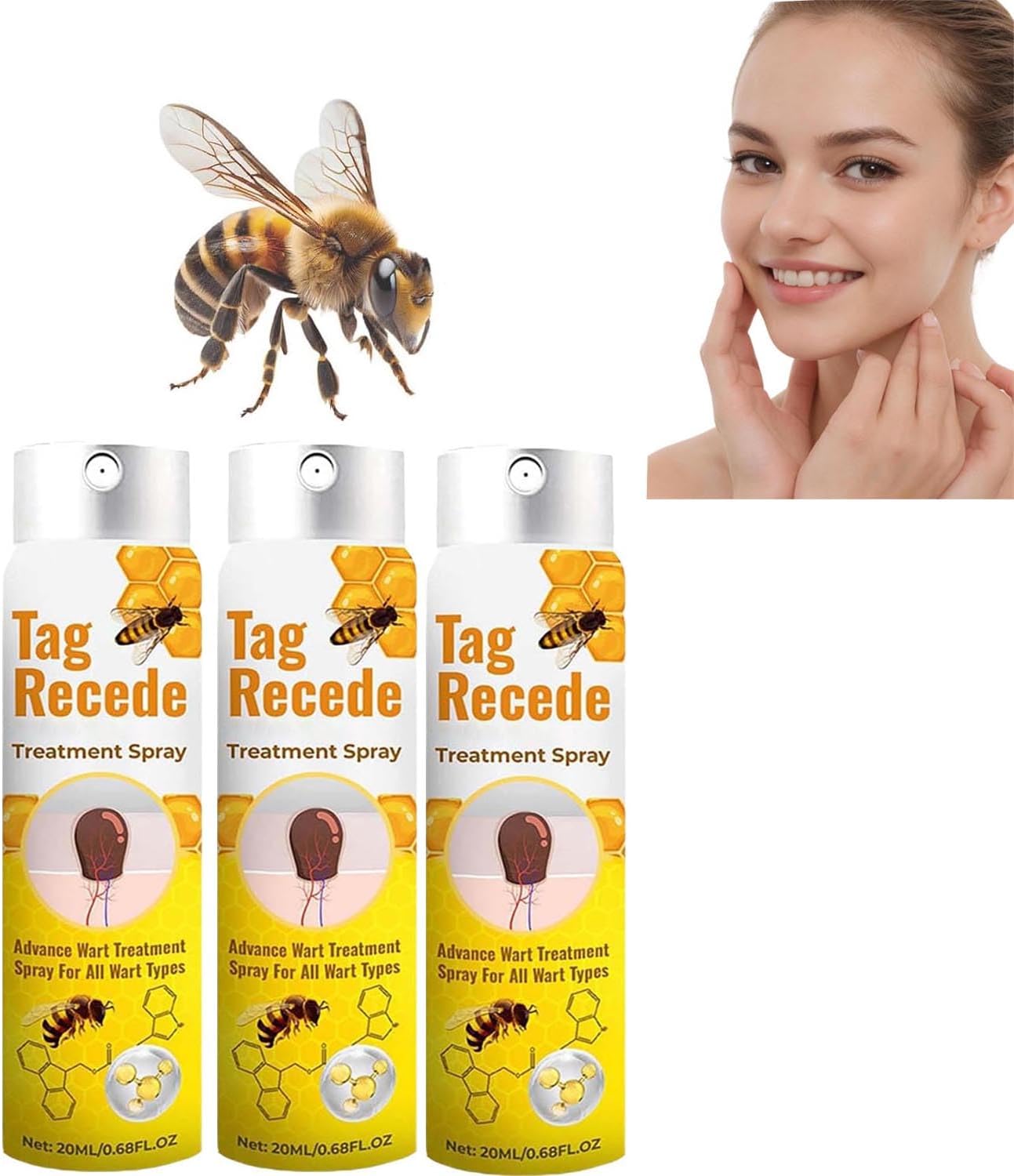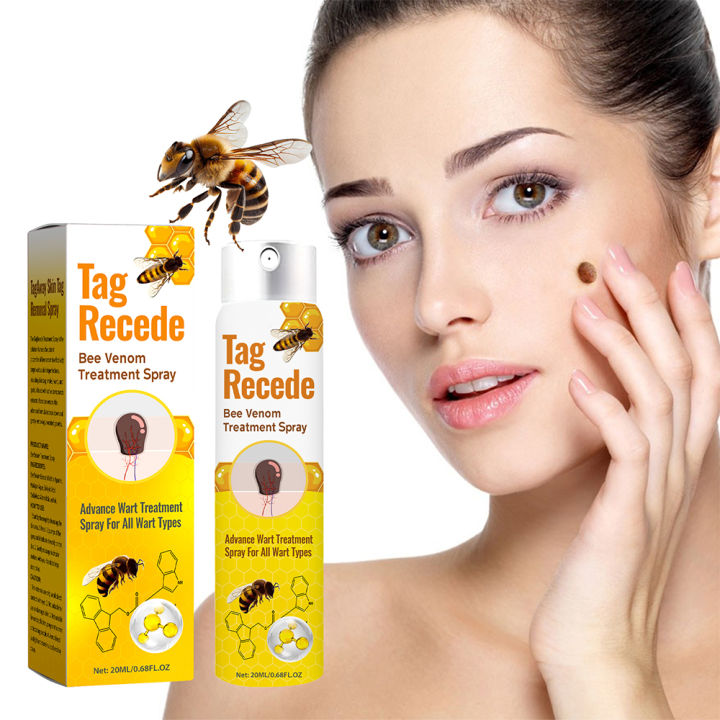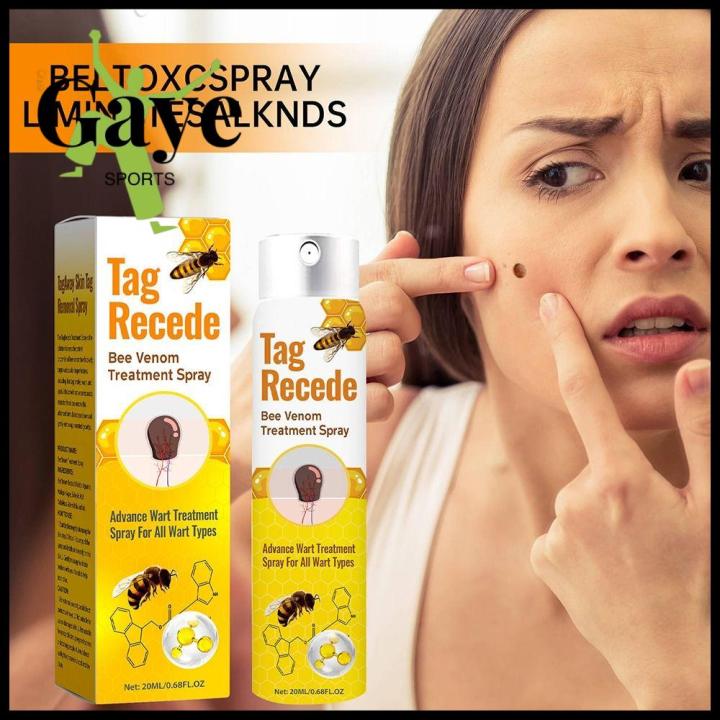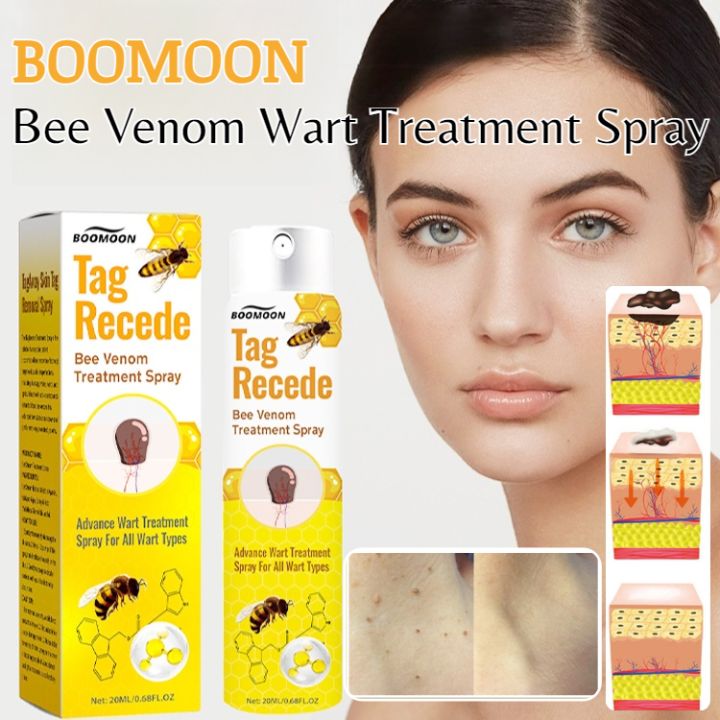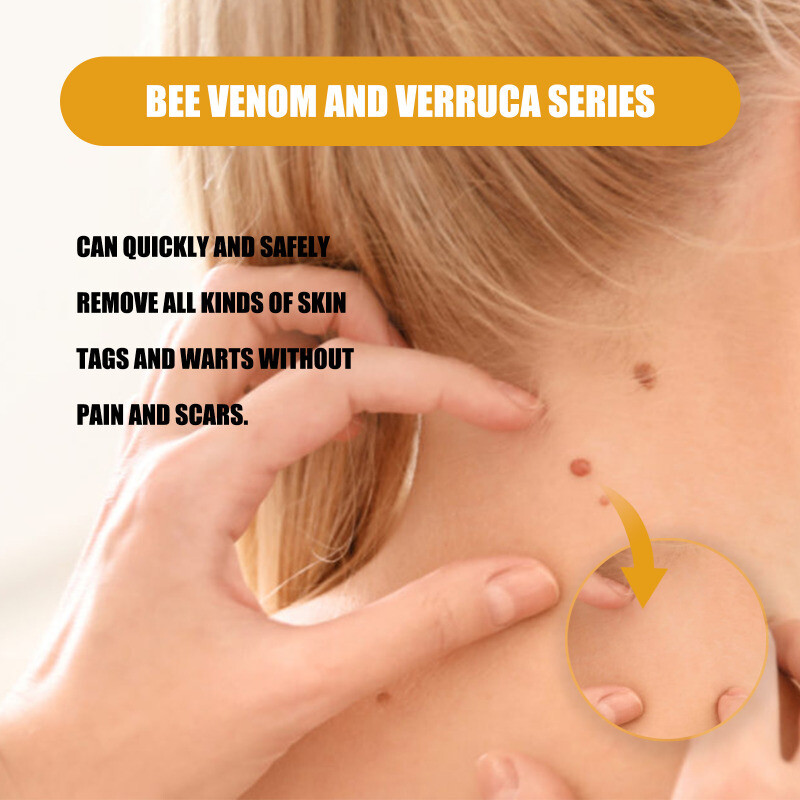Can Bee Venom Remove Skin Tags

Imagine a sun-drenched meadow, buzzing with life. A gentle breeze carries the sweet scent of wildflowers as bees flit from bloom to bloom, diligently collecting nectar. But could these tiny creatures, armed with their potent venom, hold the key to a smoother, tag-free complexion? The buzz is growing, and it's time to investigate.
The question on many minds: Can bee venom remove skin tags? While anecdotal evidence abounds and certain studies hint at potential anti-inflammatory and even tissue-modifying properties, the consensus among dermatologists is that more rigorous research is needed to definitively confirm bee venom as a safe and effective treatment for skin tags. Current removal methods remain the gold standard, but the potential of apitherapy, specifically bee venom, for dermatological applications is certainly intriguing and warrants further exploration.
Understanding Skin Tags
Skin tags, those small, benign growths that often appear in skin folds like the neck, armpits, and groin, are a common cosmetic concern. They are typically harmless but can be bothersome due to their appearance or the irritation they may cause from rubbing against clothing.
Medically known as acrochordons, skin tags are composed of loose collagen fibers and blood vessels surrounded by skin. Their exact cause is not fully understood, but factors like genetics, obesity, insulin resistance, and hormonal changes during pregnancy are thought to play a role.
Traditional removal methods include cryotherapy (freezing), surgical excision (cutting), ligation (tying off the base), and electrocautery (burning). These procedures are generally safe and effective but can sometimes result in scarring or pigmentation changes.
The Buzz About Bee Venom
Bee venom, also known as apitoxin, is a complex mixture of enzymes, peptides, and amino acids. For centuries, it has been used in traditional medicine, particularly in apitherapy, for its potential anti-inflammatory, analgesic, and immunomodulatory effects.
Melittin, the main active component of bee venom, is known for its potent anti-inflammatory properties. Other components like apamin and phospholipase A2 also contribute to its biological activity.
Some proponents of bee venom for skin tag removal suggest that its anti-inflammatory properties could help reduce the size and inflammation of skin tags, eventually leading to their disappearance. Others believe that bee venom might disrupt the blood supply to the skin tag, causing it to wither and fall off.
The Science (or Lack Thereof)
While the potential benefits of bee venom are being explored in various fields, including arthritis and multiple sclerosis, research specifically focused on its efficacy for skin tag removal is limited. Most of the evidence is anecdotal, with individuals reporting positive results after applying bee venom products directly to their skin tags.
A key challenge is the lack of controlled clinical trials. These trials would compare the effects of bee venom to placebo or standard skin tag removal methods, providing robust evidence of its efficacy and safety.
Existing studies on bee venom's effects on skin have primarily focused on its anti-aging and anti-inflammatory properties. While these studies offer some insights into its potential mechanisms of action, they do not directly address its ability to remove skin tags.
Expert Opinions and Warnings
Dermatologists generally advise caution when considering bee venom for skin tag removal. Dr. Emily Carter, a board-certified dermatologist, emphasizes the importance of consulting with a qualified medical professional before trying any alternative treatment. "While bee venom has shown promise in some areas of dermatology, its effectiveness and safety for skin tag removal haven't been definitively established. There are potential risks involved, especially for individuals with bee allergies."
The risk of allergic reactions is a significant concern. Bee venom allergy can range from mild skin irritation to severe anaphylaxis, a life-threatening condition.
Furthermore, the concentration and purity of bee venom products can vary widely. This inconsistency makes it difficult to determine the optimal dosage and increases the risk of adverse effects, such as skin irritation, redness, and swelling.
Safer Alternatives
Given the uncertainties and potential risks associated with bee venom, established skin tag removal methods remain the preferred option. These methods are performed by trained professionals and are backed by scientific evidence.
Cryotherapy, the use of liquid nitrogen to freeze off the skin tag, is a common and effective procedure. Surgical excision involves cutting off the skin tag with a scalpel, and ligation involves tying a surgical thread around the base of the skin tag to cut off its blood supply.
Electrocautery uses heat to burn off the skin tag. These procedures are typically quick, relatively painless, and have a low risk of complications when performed by a qualified dermatologist.
The Future of Bee Venom in Dermatology
Despite the current limitations, the potential of bee venom in dermatology should not be dismissed entirely. Ongoing research into its anti-inflammatory, wound-healing, and even anti-cancer properties is promising.
Future studies could explore the use of purified and standardized bee venom components in targeted therapies for various skin conditions, including skin tags. Nanotechnology could also play a role in delivering bee venom components directly to the affected area, minimizing systemic exposure and reducing the risk of side effects.
However, until more robust scientific evidence is available, it's crucial to approach bee venom for skin tag removal with caution. Consulting with a dermatologist and exploring safer, more established treatment options remains the best course of action.
A Final Thought
The allure of natural remedies is undeniable. The idea of harnessing the power of nature, in this case, the bee, to address common ailments resonates deeply. However, it's vital to temper enthusiasm with a healthy dose of skepticism and a commitment to evidence-based decision-making.
The story of bee venom and skin tags is a reminder that not all natural remedies are created equal. While anecdotal accounts can be compelling, they should not replace rigorous scientific investigation.
Perhaps, one day, bee venom will indeed prove to be a safe and effective solution for skin tags. But until then, it's best to stick with the tried-and-true methods, and let the bees continue their vital work of pollination, while scientists continue to explore the full potential of their remarkable venom.



